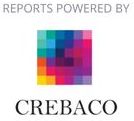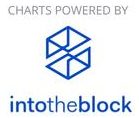
 Avalanche
Avalanche
Name
Avalanche
Summary
-Avalanche is a layer one blockchain that provides a foundation for decentralized apps and custom blockchain networks.
-Avalanche was launched by Ava Labs, founded by Emin Gün Sirer, Kevin Sekniqi, and Maofan “Ted” Yin in 2020.
-Transactions are processed and validated in Avalanche by employing a directed acyclic graph (DAG) protocol
Rating
Symbol
AVAX
Overview
Avalanche is a competitor to Ethereum, intending to dethrone Ethereum as the most popular blockchain for smart contracts. It plans to achieve this by providing a larger transaction output of up to 6,500 transactions per second while maintaining scalability.
The unique architecture of Avalanche includes The X-Chain, C-Chain, and P-Chain, which consists of three blockchains that make up the Avalanche network. Each chain serves a specific purpose, which is in stark contrast to Bitcoin and Ethereum's strategy of having all nodes validate all transactions. Avalanche blockchains employ various consensus techniques, depending on their intended usage.
Avalanche has been working on establishing its ecosystem of DApps and DeFi since its mainnet launch in 2020. Avalanche has been integrated with several Ethereum-based projects, including SushiSwap and TrueUSD.
Furthermore, through building bridges, the platform continually attempts to improve interoperability between its ecosystem and Ethereum.
Historical Price Movement (in INR)
Technology
Avalanche aims to overcome the blockchain trilemma, which states that blockchains cannot establish a sufficient level of decentralization at scale, as is typically the case on Ethereum, exorbitant gas fees.
Avalanche devised three interoperable blockchains to address this issue.
The native AVAX coins and other assets are created and exchanged via the Exchange Chain (X-Chain). These tokens follow a set of established norms, similar to the ERC-20 standard on Ethereum. The Avalanche consensus mechanism is used here.
Smart contracts and decentralized applications are hosted on the Contract Chain (C-Chain). It has its own Avalanche Virtual Machine comparable to the Ethereum Virtual Machine and allows developers to create interoperable DApps. The Snowman consensus technique is used here.
The Platform Chain (P-Chain) coordinates network validators, keeps track of active subnets, and allows new subnets to be created. Subnets are a collection of validators akin to a validator cartel. Each subnet can validate multiple blockchains simultaneously, but a blockchain can only be validated by one subnet at a time. It also makes use of the Snowman consensus algorithm.
The Exchange Chain, which uses its Avalanche consensus method, is where AVAX is traded. The Avalanche consensus mechanism, unlike proof-of-work or proof-of-stake, does not have a single leader processing transactions that are then validated by others. Instead, a directed acyclic graph (DAG) protocol is used by all nodes to process and validate transactions. As a result, transactions are processed in parallel, and random polling by validators assures that transactions are correct with statistical confidence. This consensus technique has no blocks, allowing for rapid completion and a considerable increase in blockchain performance.
Seed sale
2.5%
Private sales
3.5%
Public Sales
10%
Foundation
9.26%
Community endowment
7%
Testnet incentive program
0.27%
Strategic partners
5%
Airdrops
2.5%
Team
10%
Staking rewards
50%
Volume (27th March 2022)
$675,711,243
Total Supply
395891290
Circulating supply
246,199,536.37 AVAX
Crowd Sales
It has raised $275.05M in 3 rounds of funding.
Funding
00/06/2021:Private sales- $230M
00/072020:Public Token sales -$45M
15/06/2020:Initial Coin offering -$50K
Country
USA
Name of Organization
Ava Labs, Inc.
Year Incorporated
2020
Registered Address
263 S 4TH STREET #110497, BROOKLYN, New York, 11211
Dispute Resolution and Governing Law
USA (DELAWARE)
Country Risk Assessment
A1
Founding Team
| Name | Designation | Education | Experience |
| Emin Gun Sirer | Founder and CEO | Princeton University: BSc computer science University of Washington: Ph.D. in computer science | 4 yrs |
| Chris Lavery | CFO | The Wharton School: MBA Georgetown University Law Center: JD corporate Law Georgetown University: BA | 24 yrs |


 Avalanche
Avalanche












